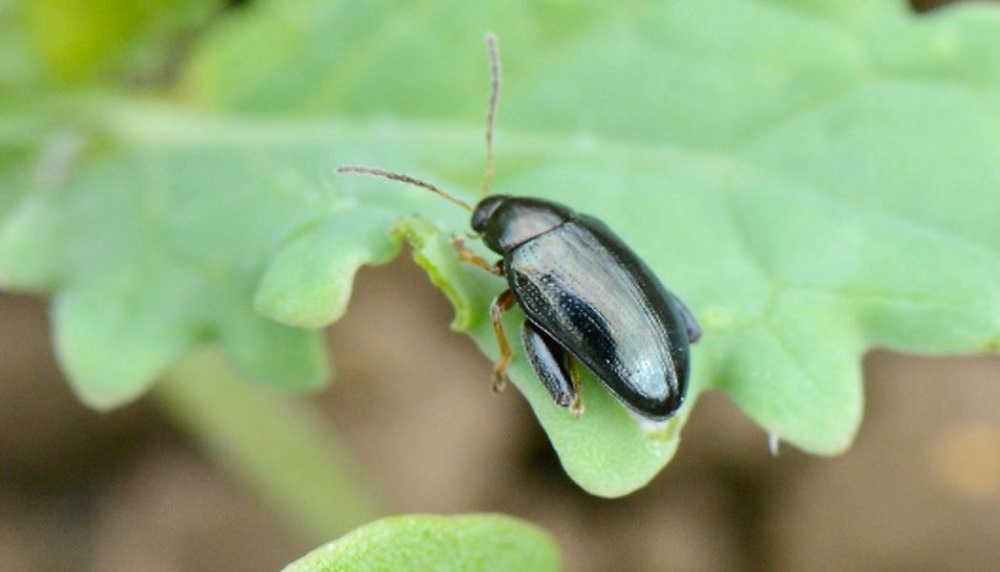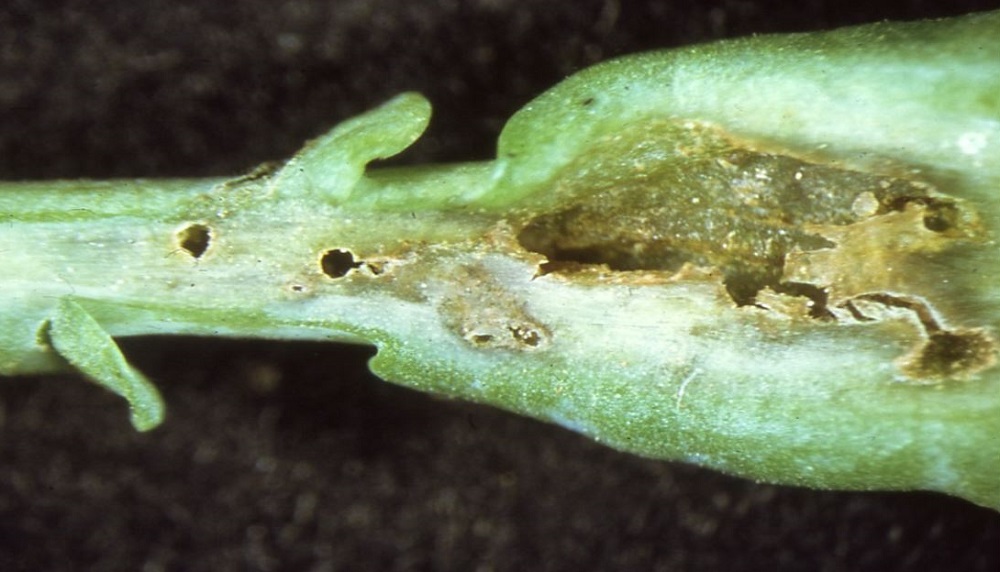- Home
- Knowledge library
- Why cabbage stem flea beetle (CSFB) is an issue in oilseed rape
Why cabbage stem flea beetle (CSFB) is an issue in oilseed rape
Cabbage stem flea beetle (CSFB) can destroy a plant’s growing point and cause crop failure. Learn about the beetle’s life cycle and the factors that influence crop risk.
Cabbage stem flea beetle damage
Historically, the pest was a particular problem in East Anglia. However, CSFB has now spread across England and Wales, as well as parts of Scotland.
Although the pest also affects vegetable brassicas, such as spring cabbage and kale, it is only a relatively minor problem in these crops. However, this beetle is of increasing importance in baby-leaf salad crops, where adult feeding damage can make the crop unmarketable.
Damage by adult beetles
Oilseed rape is most vulnerable at emergence, especially when it is unable to outgrow feeding damage caused by adult beetles. Critically, the destruction of the growing point of plants can cause crop failure.
Historically, neonicotinoid seed treatments helped protect the crop during these growth stages, until their withdrawal from use in 2013. Resistance to pyrethroid insecticides in the UK CSFB population has also become a major issue. Without effective chemical protection, the pest has become more problematic.
Damage by larvae
For surviving crops, larval feeding – which occurs mainly in the petioles, but also less frequently the stems – reduces vigour. However, in terms of yield, oilseed rape can tolerate relatively high levels of larval damage.
Severe larval infestations can reduce yield and result in plant death. Loss of mature plants is particularly problematic, due to the relatively high level of investment made and decreasing choice of alternative cropping options.
Basic beetle biology
Pest monitoring is a key foundation of integrated pest management (IPM). Pest recognition and understanding of the life cycle are essential.
Adults are 3–5 mm long, metallic blue-black or light brown. They have long antennae, large hind legs and jump when disturbed. They are particularly visible at harvest, as they move across trailer-loads of rapeseed.
The larvae are white with numerous, very small, dark spots on the back, a black head and tail, and three pairs of dark legs. When fully grown, they can reach 6 mm in length.
- Adults emerge from pupae and feed on foliage (Jun–Jul).
- Adults ‘rest’ in moist, sheltered places (Aug).
- Adults migrate into crops, feed on leaves and mate (Aug–Sep)*.
- Adults lay eggs and feed on leaves (Sep–Dec)**.
- Eggs hatch and larvae feed, if temperatures are 3°C or warmer (Oct–Feb).
- Larvae feed on main stem behind the growing point (Mar–Apr).
- Larvae drop to the soil and pupate (May).
*Migration usually does not to begin in earnest until end August/start September, before peaking in mid-September.
**Beetles gradually lose their wing muscles in the autumn and tend not to move from the original crop migrated to. Trap crops exploit this aspect of biology.
What factors influence cabbage stem flea beetle risk?
Weather and drill date have the strongest influence on risk to crops from this pest:
- Where seedbed conditions are good, crops drilled:
- Early (in August) are more likely to establish before adult migration begins
- Late (in September) are associated with lower larval pressures in the crop
- Very late can establish after the bulk of the adult migration has occurred
- Air temperatures above 16°C favour adult migration
- A mild autumn favours egg laying and early hatch of larvae, coinciding with smaller, more vulnerable plants
- Crops drilled into dry and cloddy seedbeds can be slower to emerge, with reduced vigour
- There are no obvious differences in susceptibility across Recommended List (RL) varieties. However, varieties associated with good autumn vigour achieve rapid establishment and growth, and move through vulnerable growth stages faster
An adult cabbage stem flea beetle

CSFB damage on the petiole of oilseed rape
 ADAS
ADAS
Topics:
Sectors:
Tags:

